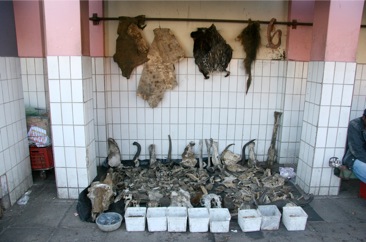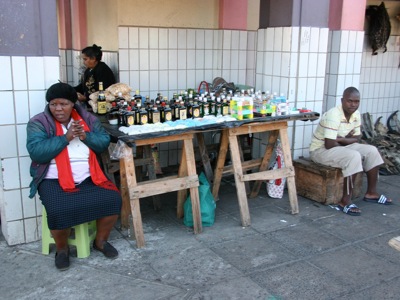3. The Demand for Muthi, by Aukram Burton
Little cultivation of indigenous medicinal plants is carried out due to a lack of knowledge regarding indigenous plant production and the economics of associated markets. These facts explain why Silverglen is providing courses on seedling propagation, and is expanding its courses to include medicinal plant farming as a way of addressing the current demand for the numerous plant species used.
eThekwini’s Silverglen Medicinal Plants Nursery is playing a crucial role in ensuring that medicinal plants (muthi) in danger of extinction are being protected for future generations. Muthi is the generic Zulu word used by traditional healers who prescribe medicinal plant remedies for patients in need. The term muthi derives from the Nguni (a subgroup of the Zulu nation) root -thi, signifying ‘tree.’ Usually translated into English as either ‘medicine’, or ‘herbs’. Muthi refers to natural remedies formulated by traditional healers called Inyangas or Sangomas, who are persons possessing ancient healing knowledge.
These two vendors in the Victoria Market area in Durban are among the several hundred thousand “muthi” vendors in South Africa. The ”muthi” market drives intensive harvesting of wild plants, which is a serious threat to the area's biodiversity as well as biodiversity throughout the rest of the country. (Photo by Aukram Burton)
According to the “Southern African Trade Directory of Indigenous Natural Products,” published in September 2005, the following trade statistics speak to why plant species are being over-exploited:
Informal Market
-
✦50 to 100 million traditional remedy consumers reside in southern Africa.
-
✦There are 400,000 to 500,000 traditional healers.
-
✦35,000 to 70,000 tons of plant material are consumed annually.
-
✦More than 1,000 species of plants are actively traded in the region.
-
✦Several hundred thousand people are income-earners in this industry.
Formal Market
-
✦It is estimated that the annual trade in medicinal plants in South Africa could be worth up to US $150 million.
-
✦Between 5 000 and 10 000 tons of raw material is exported from southern Africa per annum.
-
✦800 tons of Devil’s Claw, and 700 tons of Aloe are traded annually.
-
✦About 50 species are actively traded in the formal market in southern Africa.
The international market has a huge appetite for medicinal plants. Hong Kong imports 77, 250 tons of pharmaceutical plants a year, and European countries like Germany and France import 42,800 and 15,950 tons respectively.

There are 6 million “muthi”consumers in KwaZulu-Natal and 27 million in South Africa. More than 700 plant species and animal products are actively traded throughout South Africa for indigenous medicinal use. (Photo by Aukram Burton)

